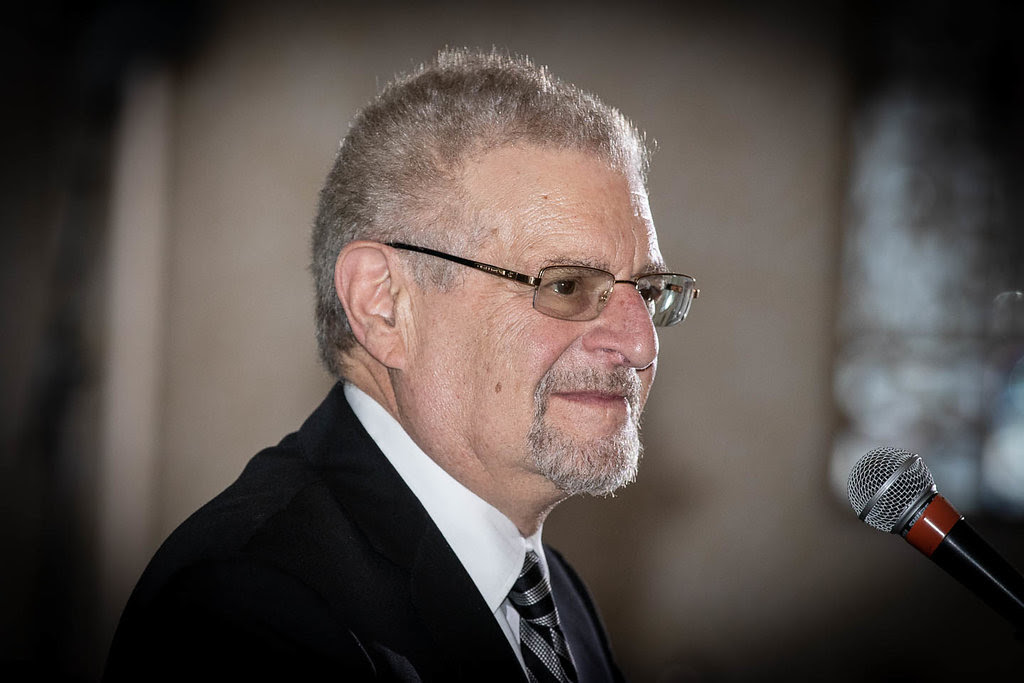Dr. Kenneth Byalin is a Zen meditation teacher and President of Integration Charter Schools, which works to integrate emotional and special needs students into public school and provide innovative pathways to college. His Zen practice manifests itself in social action, in particular filling a gap in public education in the USA. Clay Hamilton interviewed Ken in autumn 2019.
o o o
Briefly describe yourself as a meditation teacher.
Zen teacher. I live and work on Staten Island. While I have been leading a weekly meditation group here for almost 17 years, my main practice is in social action.
I am the President of Integration Charter Schools, working to fully integrate students living with emotional challenges and others with special needs. I have a Ph.D. in Sociology from NYU and a MS in Social Work from Columbia University, and was previously the Chief of Service at South Beach Psychiatric Service for 18 years.
I’m not a typical Zen teacher. My Zen practice manifests as social action. Integration Charter Schools is a manifestation of the practice.
How did you first learn to meditate and why/how did you become a meditation teacher?
I learned to meditate basically from Kyudo Nakagawa Roshi. I received transmission (authorization to teach) from Roshi Bernie Glassman of the Zen Peacemakers. I was ordained as a priest in the Soto Zen lineage by Bernie.
I discovered meditation in the Spring of 1959. Or more accurately, that was when I discovered Zen. Assigned to write a haiku in a high school creative writing class, I found one paperback book on haiku in our local book store and next to it on the shelf an introduction to Zen by D.T. Suzuki. I bought them both. I immersed myself in the Zen book. Something completely captured my imagination. That summer I grew a chin beard, attempting to capture the look of Zen masters. I got my friends to shave my head. I tried to teach myself to meditate mostly unsuccessfully.
Over the years, Zen continued to fascinate me. I bought an occasional Zen book. I tried periodically to meditate, but it was 30 years before I managed to sit consistently. It was then that I began looking for a group to sit with regularly. I found a number in the Manhattan phone book. I visited them all.
The Soho Zendo had a good feel. And they sat weekly on a night that fit my schedule. I began sitting with them in September 1991. Two months later, senior members of the sangha encouraged me to a weeklong ‘sesshin’ (a period of intensive meditation in a Zen monastery). Kyudo Roshi was coming from Japan in December, an experience not to be missed. I was frightened but the sangha was encouraging. I signed up.
When I entered the Zendo for the beginning of sesshin, Kyudo Roshi was already on his cushion. That was the first time I saw him. I had never seen anyone sit so still.
Over the next two and a half years, I was able to sit sesshin with Roshi two or three times a year.
What is the greatest benefit you personally get from meditation?
There is a lot more peace in my life.
What is your favourite meditation technique or form of practice?
Zazen
What do most students struggle with or get wrong?
American students tend to be very impatient.
What important aspect of meditation do you find yourself teaching over and over again? Is there a phrase or message or quote you repeat to students again and again?
Sit still. Shut up. Sit every day.
How many times and how much time per day do you recommend students to meditate?
Build yourself so that you can sit 30 minutes a day. Try to do an intensive multiday retreat once a year. Once one has established the 30 minute practice, it can be helpful to do 108 consecutive days meditating for 1 hour.
Describe your ideal meditation session (location, length, outcome, etc)
Any place. At least one breath. No outcome.
What do you think about guided meditation vs non-guided self-practice? Is one better or preferred, or does it depend on the individual, their goals and how much experience they have?
Zen is not guided meditation. Many people think Zen practice is about finding a moment of peaceful relaxation in the midst of life’s turbulence. That’s not it for me. Kyudo Roshi said, “If you want to relax, watch television.” I sit to make peace with my demons. The principle instruction, “Sit still, shut up.” Impulses arise. Do nothing. Just sit. In the space created between impulse and reaction is freedom. Allowing the impulses, thoughts, fantasies to bubble up, to let them go, just sitting opens an enormous spaciousness. Just sit. It is not about finding 30 minutes of peace on the cushion. It is about creating the space in which peace can enter your life the rest of the day.
What misconceptions about meditation do you hear in the media or popular culture?
Zen is not relaxation. Zen is not withdrawal from the world or passive acceptance of injustice.
What advice do you give people who struggle to maintain a consistent practice?
Stop evaluating and judging your meditation.
What meditation books have you read and admired, re-read, or do you recommend to others (they can be directly or indirectly related to meditation)?
Bernie Glassman, “Instructions to the Cook”.
How can readers get in contact with you or find out more?
Go to ICS website at http://integrationcharterschools.org.
I have a blog, Zen of Charter Schools http://integrationcharterschools.org/zen/
o o o
[This interview is an extract. You can read Ken’s full interview, plus 29 more interviews, in the book How Do You Meditate? Interviews with 30 Meditation Teachers. Available from Amazon.]


